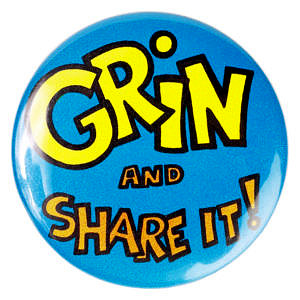When Your Message Matters: 4 Ways to Make It Stick
 You may be a corporate trainer giving crucial information to a group of employees. You may be teacher lecturing a class full of students. You might be telling a co-worker or friend something you consider really important. Or you may be a parent, hoping that your children will remember and heed what you tell them.
You may be a corporate trainer giving crucial information to a group of employees. You may be teacher lecturing a class full of students. You might be telling a co-worker or friend something you consider really important. Or you may be a parent, hoping that your children will remember and heed what you tell them.
Yes, you might just cross your fingers and hope that they “get it.” After all, they heard it, right? Or you might not even worry about it. You did your job by telling them the information. Now it’s their job to remember and use it. Maybe you’ll ask, “Do you have any questions?” And, simply because they have no questions to ask, you make the assumption that they understood what they heard you say.
OR: You can use one of the following simple memory tips to make sure that your listeners really understand your message. These easy retention strategies take no more than a minute or two of time, and yet they help your listeners move the new information into long-term memory, which is important when your message really matters.
Don’t be embarrassed by asking the listener to do one of these activities. Simply explain that you want to make sure they don’t forget the important information and that these activities will help them remember information longer.
 1. TEACH IT. The best way to remember anything is to teach it to someone else. Invite learners to do just that. They form pairs or triads with the folks around them, and then take turns explaining the important points to the others.
1. TEACH IT. The best way to remember anything is to teach it to someone else. Invite learners to do just that. They form pairs or triads with the folks around them, and then take turns explaining the important points to the others.
Your friend or co-worker can teach another person what you shared with him. Or you can say, “Now pretend that I don’t know anything about this topic. What would you tell me? What do I need to know?” And then listen to what your friend says and paraphrase back what you hear.
As for your children, have them teach each other, teach you, or teach a friend about what you just taught them. If no one is around, and your child is young enough, have her teach a pet or stuffed animal the new information. Make it a game by saying, “Little Bear needs to know what I taught you. Can you teach him?”
 2. WRITE IT. If talking one-on-one with a friend or co-worker, hand that person a pen and sticky note or card and say, “This is really important, so you might want to jot it down.” You can do the same with children. Say, “Let’s write this down together so we won’t forget it.”
2. WRITE IT. If talking one-on-one with a friend or co-worker, hand that person a pen and sticky note or card and say, “This is really important, so you might want to jot it down.” You can do the same with children. Say, “Let’s write this down together so we won’t forget it.”
3. SEE IT. If you are teaching or training, remember to post important information around the room (on walls, tables, floors, hallways, doors) where learners can see and read it often during the class or training.
If talking with a friend or co-worker, invite that person to post the index card or sticky note he has written on, or the page of information you’ve given him, on a bulletin board, wall, desk, mirror, computer, door – anywhere the person will be likely to reread it.
 The same applies to your training participants. Tell them to post the important things they’ve learned in places where they will reread, remember, and use the information later.
The same applies to your training participants. Tell them to post the important things they’ve learned in places where they will reread, remember, and use the information later.
Your kids can do the same with their index cards or sticky notes. They can choose the place they wish to tape the reminder so that they will see it daily.
To model this, you first make up a short slogan that captures the heart of your message, or that reminds people about the information they heard. Then repeat the slogan a few times as you talk and have your listeners repeat it also. Finally, have them make up their own catchy-phrase and let them know that, by doing so, they will be able to remember the information longer.

FYI: According to advertising research, when a slogan is repeated a minimum of six times over a few hours, the slogan – and the information that it represents – begins to move into long-term memory. Think “Just do it!” “Fly the friendly skies.” “Got milk?” and so on. With friends or co-workers with whom you’re sharing information, ask them to help you think of a catchy phrase that summarizes the information. With your kids, you can do the same: encourage them to make up ways to remember what you tell them. During the day, invite them to repeat the slogans they create.
FINAL THOUGHTS. Teach it, write it, see it, make it – these are all simple ways to move important information into long-term memory. When your message matters, and you want listeners to remember what they hear, use one of these quick, easy memory strategies to make your message stick.
**************************

For dozens more ways to make your message stick, I invite you to explore Ten-Minute Trainer, Training from the BACK of the Room, and Using Brain Science to Make Training Stick. All books are available on Amazon.com. For free book excerpts, click HERE.